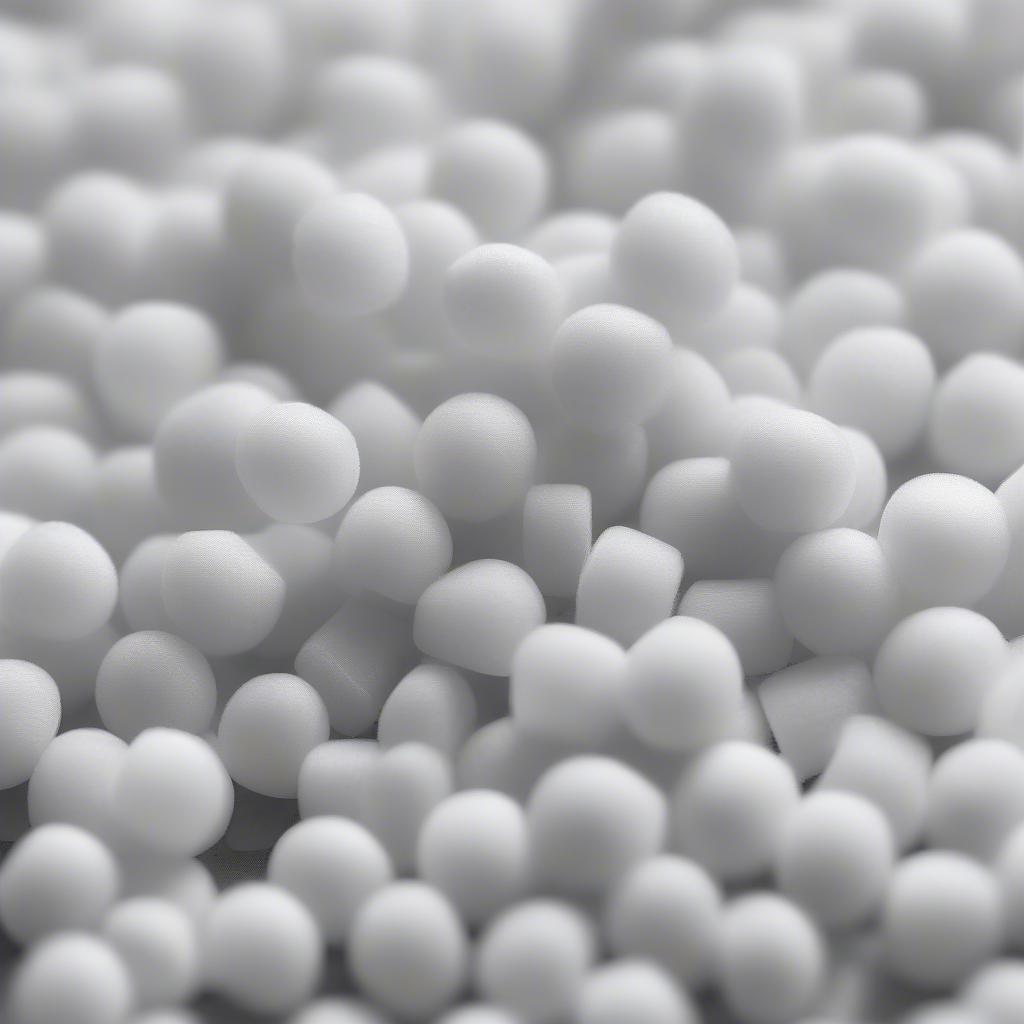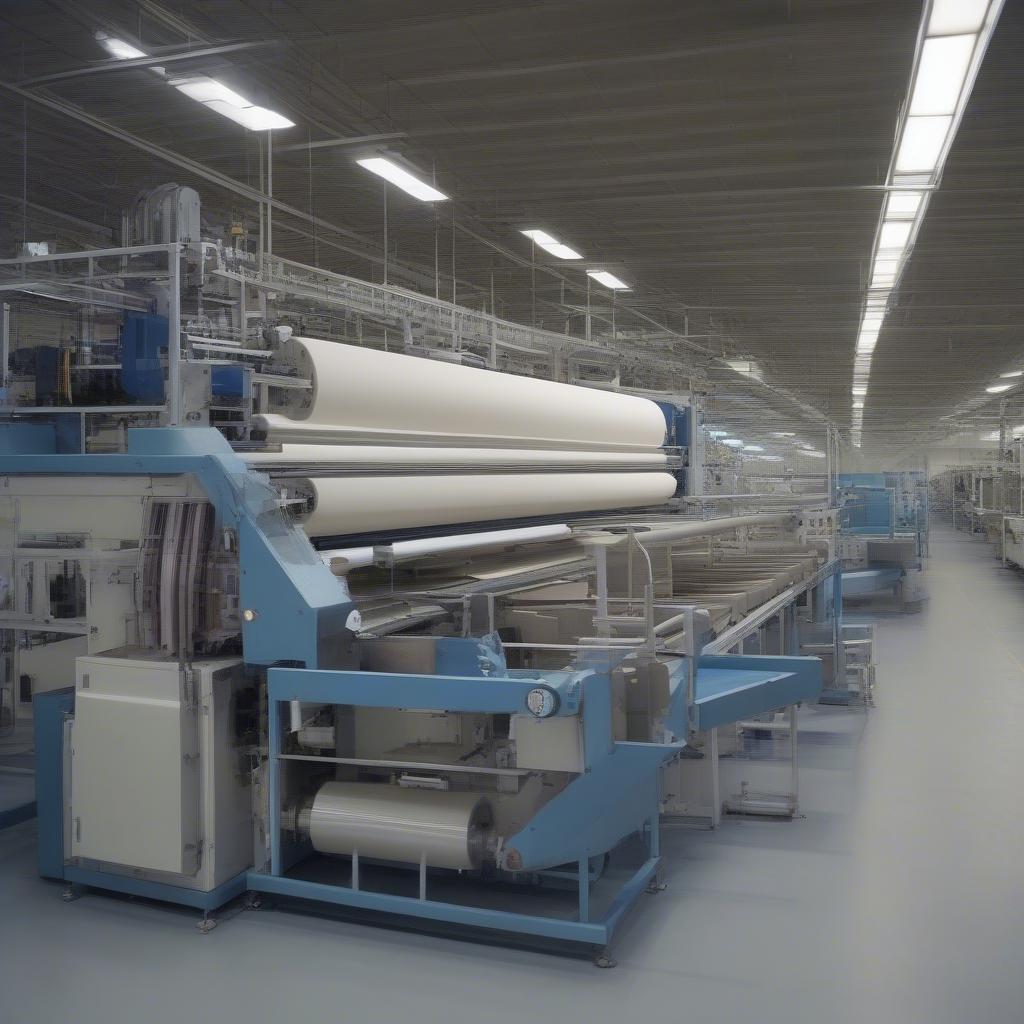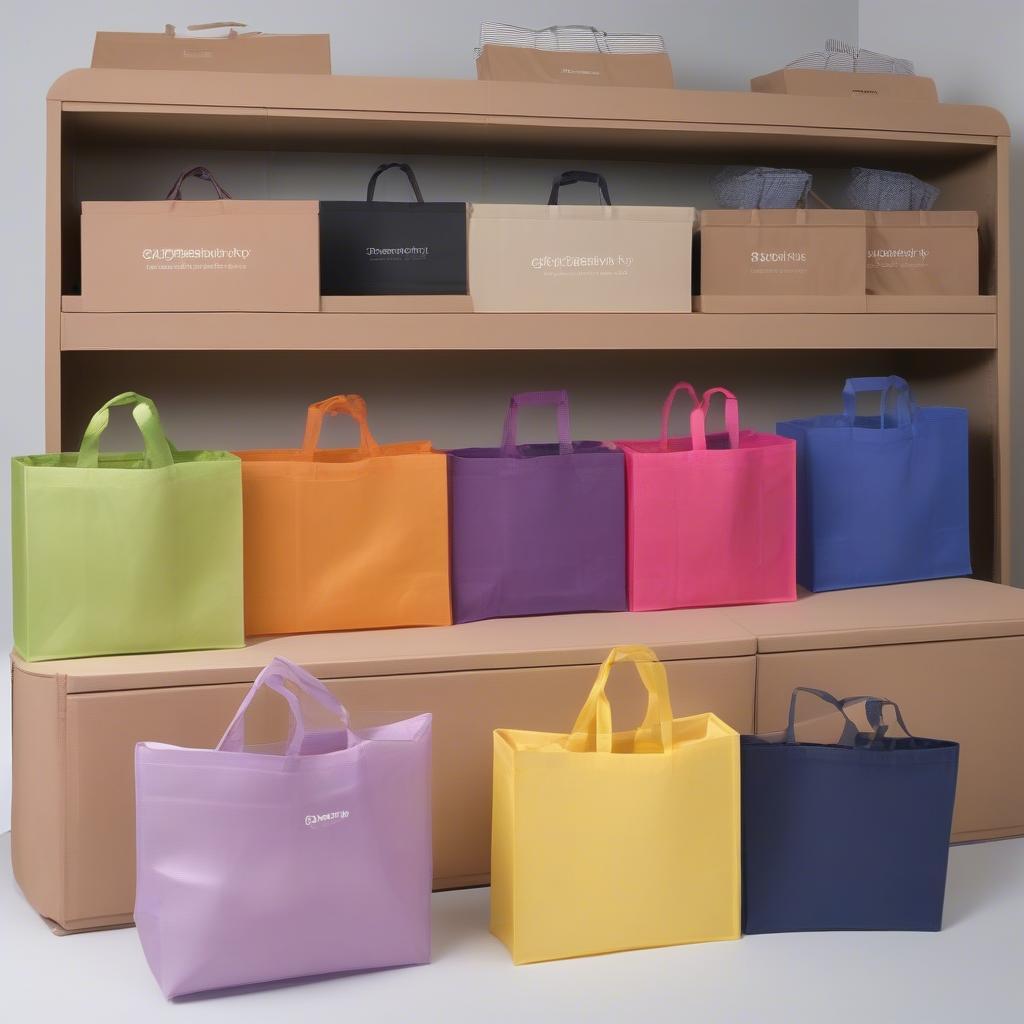Woven Bag
Decoding the Non Woven Bags Making Process
The Non Woven Bags Making Process is a fascinating blend of efficiency and sustainability. From raw materials to finished product, this article delves into each step, offering a comprehensive look at how these ubiquitous bags are created. We’ll explore the materials used, the machinery involved, and the various techniques employed, highlighting the eco-friendly aspects of this manufacturing process.
From Pellets to Fabric: Understanding Non-Woven Material
Non-woven fabrics, unlike traditional woven or knitted textiles, are made directly from fibers bonded together through mechanical, thermal, or chemical processes. This gives them unique properties, making them ideal for a variety of applications, including bag production. The process typically begins with polypropylene (PP) pellets, a common plastic resin.
 Polypropylene Pellets for Non-Woven Bags
Polypropylene Pellets for Non-Woven Bags
These pellets are melted and extruded into long, thin fibers. These fibers are then laid out in a web-like structure, creating a sheet of non-woven material. Several methods can be used to bond these fibers together, including:
- Thermal bonding: Heat is applied to melt and fuse the fibers at their intersection points.
- Chemical bonding: Adhesives are used to bind the fibers together.
- Mechanical bonding: Needlepunching or hydroentangling interlocks the fibers, creating a strong and durable fabric.
 Non-Woven Fabric Production Line
Non-Woven Fabric Production Line
The resulting non-woven fabric is then ready to be cut and sewn into bags.
The Non Woven Bags Making Process: Step-by-Step
The actual bag-making process can vary depending on the complexity of the bag design and the machinery used. However, the basic steps are typically as follows:
- Cutting: The non-woven fabric is cut into the desired shape and size using automated cutting machines.
- Printing (optional): If the bags require printing, this step is performed before sewing. Various printing methods can be used, including screen printing and flexography. printed black non woven bags are a popular choice.
- Sewing: The cut pieces are sewn together to form the bag structure. Automated sewing machines are commonly used for high-volume production. non-woven pvc sewing bag for bedding factory demonstrates one application of this process.
- Adding Handles/Accessories: Handles, zippers, or other accessories are attached to the bag.
- Quality Control: The finished bags are inspected to ensure they meet quality standards.
- Packaging: The bags are then folded and packaged for shipping.
Why Choose Non-Woven Bags?
Non-woven bags are increasingly popular due to their various advantages:
- Durability: They are strong and tear-resistant, making them suitable for carrying a variety of items. best recycled pp woven bag is an excellent example of strength.
- Eco-Friendliness: Many non-woven bags are made from recyclable materials like polypropylene. no laminated pp woven bag offers an eco-conscious choice.
- Cost-Effectiveness: The non woven bags making process is relatively efficient, resulting in lower production costs.
- Versatility: They can be easily customized with different colors, prints, and sizes. laminated non woven shopping bag manufacturers offer a range of choices.
 Stacks of Finished Non-Woven Bags
Stacks of Finished Non-Woven Bags
Conclusion
The non woven bags making process is a testament to modern manufacturing efficiency and sustainability. From the versatile nature of non-woven fabric to the streamlined production process, these bags offer a practical and eco-conscious solution for various needs. Understanding this process helps appreciate the value and benefits of choosing non-woven bags.
FAQ
- What are non-woven bags made of? Primarily polypropylene (PP), a recyclable plastic resin.
- Are non-woven bags biodegradable? Some are, depending on the specific materials used in their production.
- How are non-woven bags made? Through a process of fiber extrusion, web formation, bonding, cutting, and sewing.
- What are the advantages of non-woven bags? Durability, eco-friendliness, cost-effectiveness, and versatility.
- Can non-woven bags be recycled? Many are recyclable, particularly those made from PP.
- Are non-woven bags strong enough for grocery shopping? Yes, they are designed to carry a reasonable weight.
- What is the difference between woven and non-woven bags? Woven bags are made from interlaced yarns, while non-woven bags are made from bonded fibers.
Need More Information?
Explore other related articles on our website for more in-depth information about sustainable packaging options and the latest trends in the industry.
Contact us at Hanoi, Vietnam or Tech Avenue, Suite 12, San Francisco, CA 94105, USA for 24/7 customer support.
